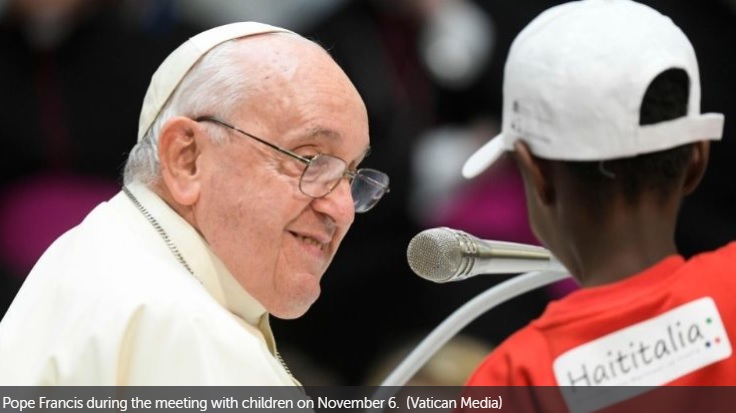Prayer for the Eternal Repose of Pope Francis O God…
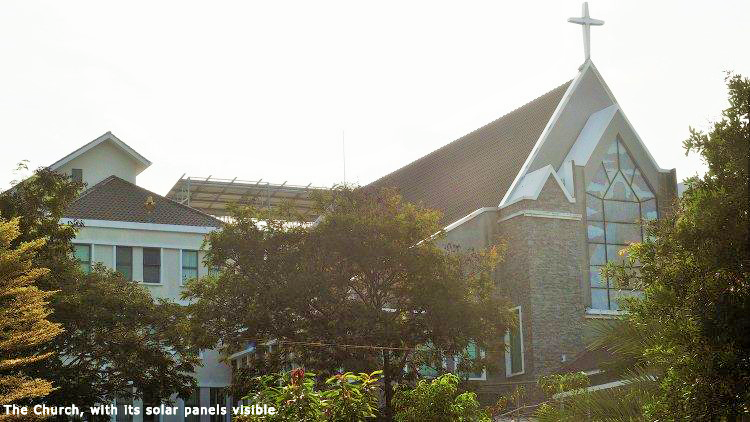
The greenest parish in the world
Pope Francis’ special “Laudato sì” year is being marked across the world. A parish in Malaysia’s Penang State has pledged to become the “greenest” in the whole of the Malaysia and beyond.
The Church of the Divine Mercy celebrates the fifth anniversary of Pope Francis’ Encyclical Laudato sì with special pride. Even two years prior to the encyclical’s publication, Divine Mercy parishioners had already begun to show their love for the Lord through all His creatures, starting with the world of plants.
Although not a Franciscan, the parish’s pastor, Fr Martin interprets the spirit of St. Francis in a predominantly Muslim country, transforming his church into a “green nativity scene”.
“I only wish we had more land”, he says.
He became the church’s first priest 7 years ago, when it separated from the Cathedral of the Holy Spirit. Helping him and supporting him is Magdalene, head of the ministry of Friends of Creation. She is full of ideas for the parish’s green future. The group working with Fr Martin and Magdalene are not only young people, as is often the case, but a mixture of women and men of all ages.
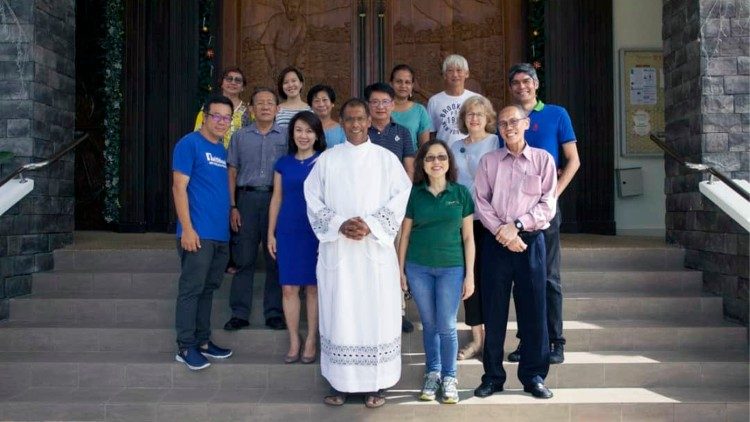
The group working with Fr Martin and Magdalene are not only young people, as is often the case, but a melting pot of women and men of all ages.
Beyond a tropical paradise
Pope Francis’ Laudato sì goes well beyond making one’s home a tropical paradise. It is an aspect of the Church’s social doctrine, of justice, of development, of peace and of human rights. Formation is one of the core necessities of Magdalene’s work: how to apply the concept of sustainability, the use of resources, rejecting waste and showing respect for the natural world.
Their work, they emphasise, is not a reflection of the aristocratic British “green thumb”, but a reflection of God’s love, the Church’s social concept and of the idea of bettering a poor world.
Fr Martin and Magdalene want to make the Church of the Divine Mercy a visible “beacon of hope” for those who live in the surrounding, humble, housing area. If it is aesthetically pleasing, it becomes a welcoming meeting point for everyone. Thus, in just seven years, a building that was all bricks and concrete has been completely transformed.
Magdalene says that it is difficult for their parishioners, the majority of whom live in neighbouring apartment blocks, to dedicate their time to gardening. She encourages them to use their food waste to make compost, and to either take it to the parish’s “grotto”, or to use it to fertilise their very own saplings, given to them by the parish.
Using what they have
There is little land. Both Magdalene and Fr Martin feel the need for more space. But, thanks to the enthusiasm and the work of the parishioners, they have managed to apply scientific methods of irrigation, exploiting the large amounts of rain, normally considered a scourge in Southeast Asia.
As an engineer, Fr Martin knows how to set up irrigation systems that channel water through a series of miniature water stations. Each cultivation requires either more or less water, dosed by parishioners every morning according to the season and according to the type of cultivation. The water also ends up in the kitchen, where the scraps of the lovingly grown vegetables ultimately end up in the compost… becoming in their turn, food for future plants.
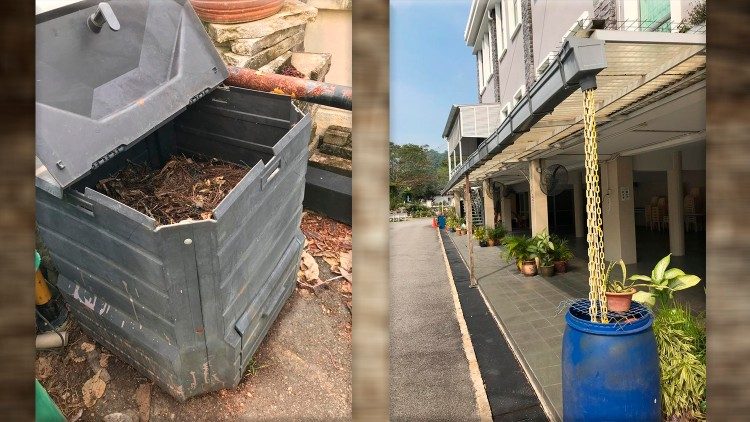
Waste equals resource
Fr Martin and Magdalene work to improve the lives of those who are not aware of the fact that when they throw away their rubbish they are eliminating so many riches that can be used to better one’s life.
As in a small utopian society, they have managed to achieve a circular economy, transforming their waste into energy as well as into small material goods such as toys and t-shirts made by the neighbourhood children.
As long as people produce waste there will be the problem of how to eliminate it. In the small Church of the Divine Mercy waste has become a resource.
Religious work
But the parish is not only a laboratory for research. It’s also a Christian community in a land where Christianity is a minority. This implies many things: Mass, prayer, being together.
The project, therefore, is not merely philanthropic or to provide social assistance. It is a religious act, a spiritual gesture, where even a grain of rice, more common than bread in Malaysia, is a divine sign.
According to an oriental proverb “in a grain of rice there is the weight of the universe”. Everything is respected, even a single lettuce leaf.
Learning with children
Another focus of the parish is making children aware of the importance of caring for our common home, teaching them how to do so, of finding solutions and solving problems. Teaching the children teaches us so much, says Fr Martin. Communal life is based on play and teaching. For example, the children reenact animals: we have the lion, the rooster, just like in Old McDonald’s farm… but with a fundamental difference: that they all have to defend themselves from humans, who have already changed, destroyed and distorted the nature that surrounds them.
Children are rewarded for “BYO” (Bring Your Own), and for each cup of chocolate milk poured into a cup brought from home they get a sticker. Their plates, also brought from home, must all be left empty at the end of each meal and a photo is taken of the empty rubbish bin, to remind each parishioner of how it should always look.

“Laudato sì” week
Fr Martin was unable to reach out to his parishioners physically during “Laudato sì” week. So they decided to celebrate a “Laudato sì” month, with live-streamed daily Masses and by sharing different videos about climate change and the preservation of nature. Since “so many miss the parish’s grotto”, as a finale, Fr Martin celebrated Mass there, from their little garden, immersed in nature. But maybe, said Fr Martin, we celebrate Laudato sì every morning, every day, all year round. And maybe, we had already been doing so for two years before the encyclical was published.
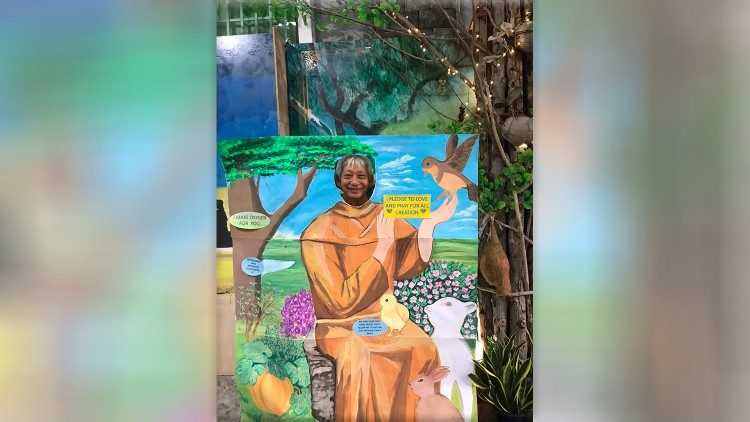
SOURCE: Vaticannews.va



